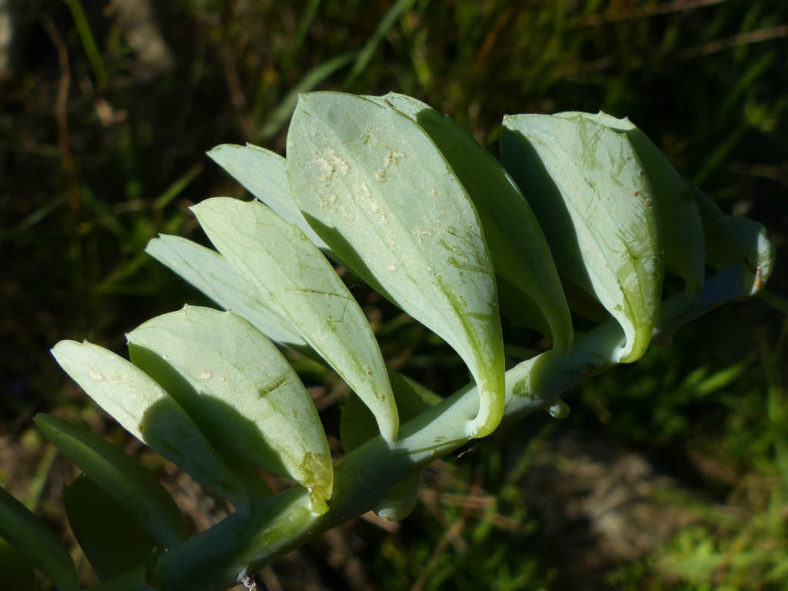Scientific Name
Curio muirii (L.Bolus) van Jaarsv.
Synonym(s)
Senecio muirii
Scientific Classification
Family: Asteraceae
Subfamily: Asteroideae
Tribe: Senecioneae
Subtribe: Senecioninae
Genus: Curio
Etymology
The specific epithet "muirii (MYOOR-ee-eye)" honors John Muir (1838-1914), a Scottish-born American naturalist, author, environmental philosopher, botanist, zoologist, and glaciologist.
Origin
Curio muirii is native to South Africa (Western Cape).
Description
Curio muirii, formerly known as Senecio muirii, is a small succulent shrub with erect or creeping stems and flat, egg-shaped leaves with sparse, pointed marginal teeth. The fleshy stems become woody and leafless lower down. They can grow up to 16 inches (40 cm) long, often rooting at the nodes. The leaves are thick, fleshy, hairless, and pale green with blue tones and a waxy coating. They can measure up to 1.6 inches (4 cm) long and 1 inch (2.5 cm) wide and have several longitudinal translucent lines.
The flower heads are brush-like, creamy-white with yellow anthers, and appear on branched stalks in early fall.

How to Grow and Care for Curio muirii
Light: Keep Curio plants in partial shade if outdoors, which is their preference in summer, and bright sunlight if indoors. They will grow in full shade but will become lank and leggy.
Soil: These plants prefer well-draining soil. For growing Curio indoors, using a container with at least one drainage hole at the bottom is essential.
Hardiness: Curio muirii can withstand temperatures as low as 30 to 50 °F (-1.1 to 10 °C), USDA hardiness zones 10a to 11b.
Watering: Curio plants are drought tolerant, but the soil should never be left dry for too long. They need some water during the growing season, but be careful not to leave the soil wet for prolonged periods.
Fertilizing: The members of this genus can take a bit more fertilizer than other succulents if you want them to grow fast.
Repotting: You do not need to repot Curio plants often. You can do it when the container becomes too small or shallow.
Propagation: These plants can be grown from seeds or cuttings.
Learn more at How to Grow and Care for Curio.
Toxicity of Curio muirii
Curio plants are toxic. Grow them with great care if you have children, pets, or livestock.
Links
- Back to genus Curio
- Succupedia: Browse succulents by Scientific Name, Common Name, Genus, Family, USDA Hardiness Zone, Origin, or cacti by Genus
Photo Gallery
Click on a photo to see a larger version.


